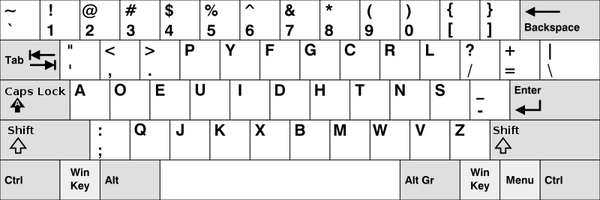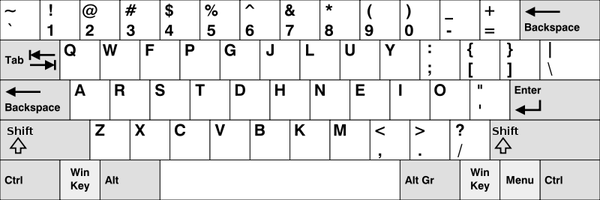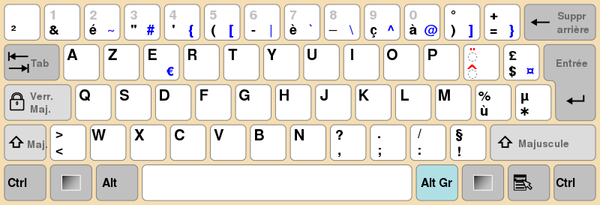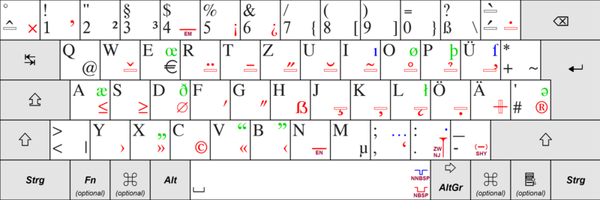The developer of RegCleaner, jv16 PowerTools, Uninstalr, WinFindr, Startup Timer, ScreenshotX, System Examiner and Windows Update Fixer.
Well, you have landed on the page searching for the same age-old question, “Why do people search for meaningless strings of letters such as ‘qwertyuiopasdfghjklzxcvbnm’ on search engines, right?
Or perhaps, you ended up here by just checking what happens when pressing random keys on the keyboard, which turned out to be the word ‘qwertyuiopasdfghjklzxcvbnm’?
And now you are wondering what it actually is. Is it some sort of secret code that only a few people know? Is it a sign of the Illuminati?
Or someone wants to find something that nobody knows about? Or perhaps, we are all just really, really bored and looking to do something unusual to kill our boredom?
Well, don’t worry if you don’t know what ‘qwertyuiopasdfghjklzxcvbnm’ means and why people look for this keyword on the internet.
As the truth is that nobody actually knows why people kept searching for these wacky and weird combinations of letters online. But wait! Does it stop us from speculating crazily and having a good chuckle about it? Obviously, it doesn’t!
Where Did ‘QWERTYUIOPASDFGHJKLZXCVBNM’ Come From?
Let’s come to the point! Searching for such odd and peculiar words on the internet is a time-honored tradition, and dates back to the early days of the World Wide Web, when every other user was still figuring out how to use Netscape Navigator and Playing Minesweeper on their PCs.
People would type in all sorts of random nonsense out of nowhere just to see what happens.
However, ‘Qwertyuiopasdfghjklzxcvbnm’ isn’t just some random nonsense, instead, it happens to be the string of letters that form when you press every key from the Standard QWERTY keyboard arrangement starting from the first row.
Wait, what is the QWERTY keyboard again?
The History and Origin of QWERTY
QWERTY keyboard is the standard keyboard arrangement that many modern keyboards are based on. The name came from the first six keys of the keyboard: Q-W-E-R-T-Y (from qwertyuiopasdfghjklzxcvbnm).
The first appearance of QWERTY arrangement of letters was spotted on the first commercial typewriter, called Sholes & Glidden typewriter, patented in 1868. It was invented by Christopher Latham Sholes, with a team consisting of Samuel W. Soulé, James Densmore, and Carlos Glidden.
The history of this keyboard arrangement is still somewhat debatable. The most popular belief is that the QWERTY arrangement in Sholes & Glidden typewriter was created to slow down the typists and prevent jamming in the typewriter. However, researchers from Japan argued that the creation of the QWERTY arrangement came from gradual changes in the pursuit of the most optimum way for telegraph operators to transcribe Morse codes.
How QWERTY became the standard keyboard layout
After filing the patent in 1873, Christopher Sholes and his team entered a manufacturing agreement with Remington which resulted in massive success. By 1890, Remington produced over 100,000 QWERTY-based typewriters spread all across the United States. Later in 1893, the five biggest typewriter manufacturers; Remington, Caligraph, Yost, Densmore, and Smith-Premier merged into one company called the Union Typewriter Company and adopted QWERTY as the standard.
Fast forward to the time when the first computer keyboard started popping up, millions of people have already gotten used to the QWERTY key arrangement. This is also further strengthened by the adoption of the QWERTY keyboard layout by Teletype Corporation, a company that manufactured electromechanical teleprinters in 1910. All of these events created a path dependence and led to the adoption of QWERTY as the standard keyboard layout all over the world.
The advantage and disadvantages of using QWERTY
The main advantage of the QWERTY layout is that it’s the most familiar keyboard layout. Considering QWERTY keyboard layout is the standard maintained all over the world, especially in the countries that are using English language and Latin alphabets. This also makes learning how to type in the QWERTY layout much easier than the other alternative layouts considering its ease of access.
However, the QWERTY keyboard layout also has its own disadvantages. One of them is that it’s not optimized for multilingual keyboard layout and is too focused on English language speakers. This led to the rise of foreign languages keyboard layouts such as AZERTY and QWERTZ.
The alternatives to the QWERTY keyboard layout
There are some alternative layouts to QWERTY that might be interesting to consider, such as:
- Dvorak
Dvorak is an alternate layout designed by August Dvorak in the 1930s. This layout was designed to challenge QWERTY and boasted to enable more accurate typing and faster typing speeds. However, the latter studies on keyboard layout tend to disagree with this claim.

- Colemak
Colemak is an alternative layout designed to enable more efficient and comfortable typing by Shai Coleman.

- AZERTY
AZERTY is an alternative layout to QWERTY designed for French speakers and widely used in France, Belgium, and some African countries.

- QWERTZ
QWERTZ is an alternative layout to QWERTY designed for German speakers. This layout is more popular in Germany and Austria.

QWERTYUIOPASDFGHJKLZXCVBNM in Modern Communication
And even though we have come a long way since then, we still can’t help but see what happens if you search for random things online.
Is there any purpose for this? Perhaps there are two possible reasons:
- To test whether your internet connection is working, you might want to type in something seemingly random to confirm your connection works.
- To play with Google’s algorithm out of boredom, just to see what happens.
With all such possible reasons to search for those bizarre words online, there is no clear answer as to why people search for those words on search engines from time to time.
Of course, there are multiple theories and conceptions about why users search for these words. For instance, some people believe that these words are actually a way for hackers to assess the security of search engine algorithms and websites.
Nevertheless, even after all this debate, a single answer cannot justify the query! Why? As it could simply be a case of extreme boredom or some serious curiosity with users wanting to see what type of results they will get to see from a search query that doesn’t make sense at all.
Irrespective of the reason, it is important to remember that search engines are influential tools that provide us with valuable information on millions of topics. Whatever you ask these search engines, they will show you results (not always! But yes, almost every time you hit that ‘search’ button).
The future of QWERTY
Hundred years after its first appearance, the QWERTY layout still dominates the market and still becomes the industry standard, even though there are more alternative keyboard layouts adopted by the people.
However, it’s plausible that this won’t remain unchanged in the future. Some studies on keyboard layout pointed out that QWERTY isn’t the most optimum layout; one of the existing alternative layouts could challenge its hegemony or there could be a new alternative emerging in the future. Path dependency doesn’t always guarantee a product’s longevity and after all, people are surprisingly very adaptable to new changes.
Conclusion
Now, you know that ‘qwertyuiopasdfghjklzxcvbnm’ isn’t just some random string of words, there is actually history and interesting studies related to it.
If you are using ‘qwertyuiopasdfghjklzxcvbnm’ as a way to test whether your Internet connection is working, you could step up your technical skills and instead open up the Windows Command Prompt and type: “ping google.com” – If you see any “reply from” results from this, it also means your Internet connection is working.
If you want to know more fun facts about weird internet things, subscribe to our blog to get these kinds of info and all Windows-related things!


